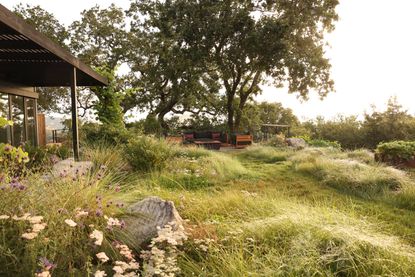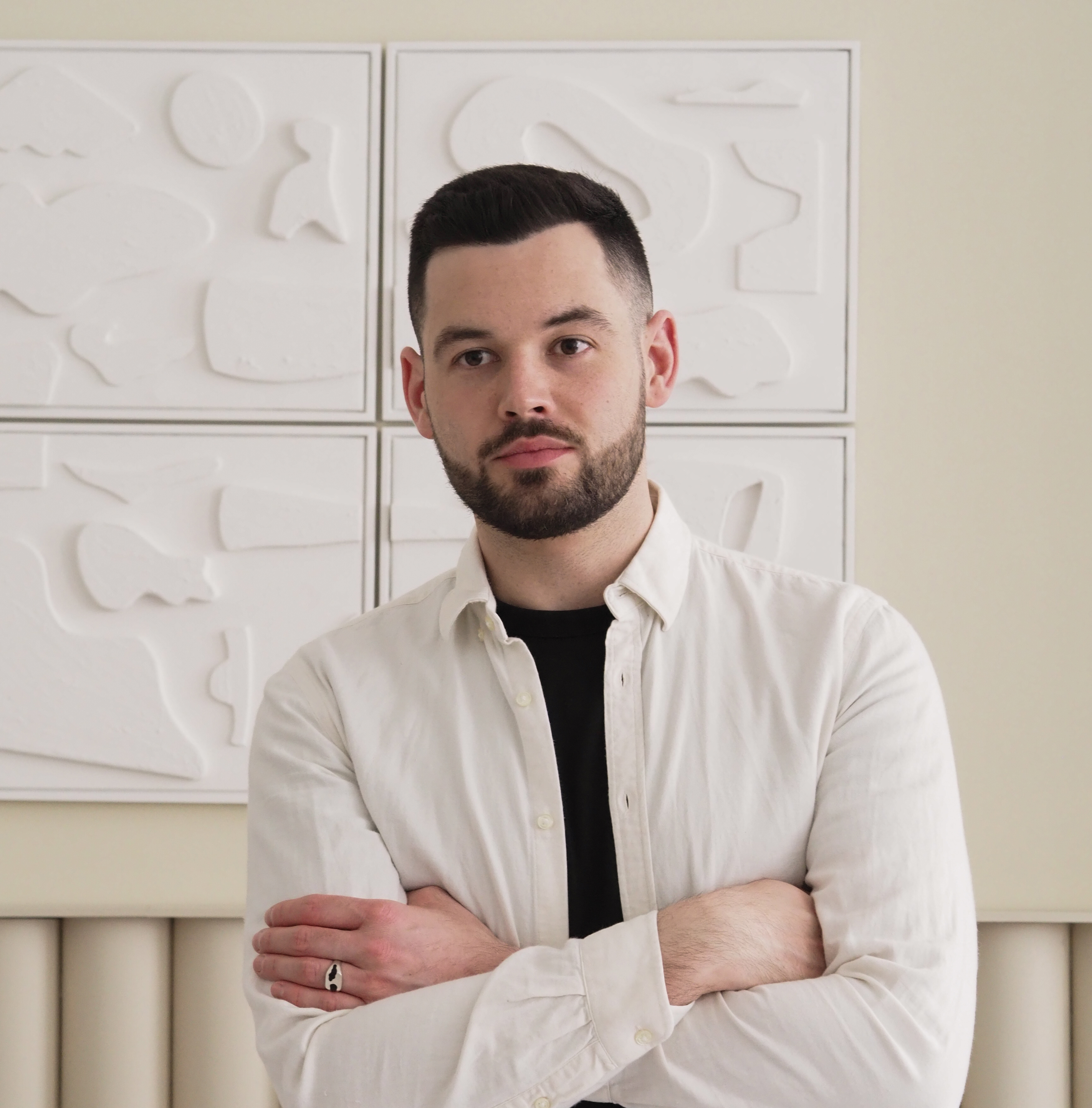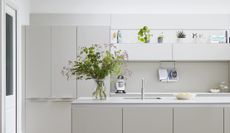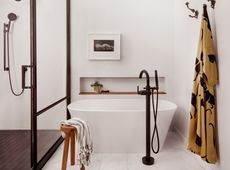What's replacing lawn? The new, 'wilder' ground textures landscape designers are choosing instead of traditional grass
A well-kept lawn might feel like the American dream, but modern landscape designers are choosing new, eco-friendly options instead


A perfectly manicured lawn and white picket fence - it's the picture of the American dream, right? Well, maybe once. Now, many of the best landscape designers across the country have accepted that lawn isn't necessarily the best option, both in terms of creating a front or backyard that feels interesting and modern, but that takes into account the role your landscaping plays in your environmental footprint.
However, lawn has big shoes to fill. It's a space-filler that's got huge curb appeal and it's relatively simple to lay and maintain. So the question is: what landscaping ideas are replacing lawn?
I asked landscape designers about the textures that are inspiring their designs right now, and from wilder grasses to hardscaping, you might find something that will shake up how you think about your yard.
Why are landscape designers moving away from lawn?
While a lawn might be a natural element, it doesn't function in the same way as completely natural environments. 'Traditional high-need annual grass lawns are definitely entering confronting times,' explains landscape designer Christian Douglas. 'As with all monocultures, you’re dealing with a low-diversity system, where its participation in natural world processes is limited. Inputs are high. Outputs are low.'
That is, lawns require a lot of water to maintain, and they don't deliver when it comes to wildlife gardening by providing food and habitats for important insects. 'Lawns are notoriously water thirsty and high maintenance,' agrees landscape designer Ben Fredrickson. 'You either have to pay someone to come out weekly or you need to break out the mower on your precious weekend time. Lawn alternatives basically save you time and money.'
'As an awareness for the need for resilient landscapes gathers pace, alternative options are becoming normalized and part of an exciting new phase of creativity,' Christian explains. 'For the most part, former lawn spaces are untapped eco-logical goldmines. Often positioned on flat areas in full sun around the home, it is an ideal condition for growing beautiful, beneficial flowering and foliage species and all manner of edible plants. Why not do both?'
According to Ben, it also reflects a changing attitude in how we consider our front yard landscaping, where lawn is often predominant. 'I think the pandemic changed the way people saw their yards, especially their front yards,' Ben tells me. 'Curb appeal value is not the only thing that matters anymore. People were looking to get outside more so I feel like gathering spaces in the front yard became a new trend.'
What's replacing lawn?

Just because you're not choosing lawn, it doesn't mean that grass, and other grass alternatives, aren't appropriate for a modern yard. 'Lower-water lawn species are also available,' Christian tells me. 'Sedge, Kurapia and Dymondia are varieties that do well on the West Coast. Each has their own personality and set of needs, but ultimately require considerably less inputs and aftercare than regular lawn grass.'
There's a slight drawback to these sorts of lawn alternatives. They don't benefit from the same quick curb appeal as traditional lawn. Christian's number one piece of advice? 'With all options, just focus on the long game, rather than instant gratification and the returns will come ten-fold,' he says.
In this California backyard designed by Christian, a habitat landing strip was created with native, low-water meadow sedge, that also needed to double as a play space for kids and dogs. 'We settled on Carex pansa, otherwise known as Dune Sedge,' Christian explains. 'The wonderful thing about Carex is you can either mow it, or leave it to grow long. So I did both. A mown central space for access and recreation with a wide, natural strip along the edges. In the fully expressed “meadow” section, I continue adding flowering varietals, such as, poppies, Yarrow and Erigeron, which the birds and insects adore. It’s a perfect compliment to our adjacent kitchen garden and orchard that welcome all guest pollinators,' Christian explains.

Price: $7.30
Quantity: 50 seeds

But grasses aren't the only alternative to lawn. Some hardscaping choices are also actually more ecologically friendly than lawn.
'Gravel is certainly having a moment,' Christian says. 'It’s a good practical option that provides a permeable surface for rain water to infiltrate rather than head to the drains, like stone or concrete.'
Gravel landscaping ideas are something that Ben Fredrickson likes to use over lawn in his designs, too. 'This material is so diverse aesthetically and functionally,' Ben says. 'It can lend itself to that natural lived in California vibe, or evoke a formal European aesthetic, or bring out the tranquility and simplicity you are trying to access in a dessert or super modern landscape.'
There are some alternatives to gravel you can use, too. 'As far as textures go, we use a lot of rock and other organic materials such as decomposed granite (DG) to fill in the spaces that a lawn would typically cover,' he tells me. 'This could be anything from a dry stream bed, to a desert gravel garden to DG pathways or seating areas.'
The takeaway from these lawn alternatives is clear: why limit yourself? 'Lawns were ubiquitous in our parent's generation, but for me, the sky's the limit with landscape design,' Ben says. 'I love creating yards that are unique and tailored to a client's specific look and lifestyle. Our homes are a reflection of ourselves and your yard is the first impression.'
Be The First To Know
The Livingetc newsletter is your shortcut to the now and the next in home design. Subscribe today to receive a stunning free 200-page book of the best homes from around the world.

Luke Arthur Wells is a freelance design writer, award-winning interiors blogger and stylist, known for neutral, textural spaces with a luxury twist. He's worked with some of the UK's top design brands, counting the likes of Tom Dixon Studio as regular collaborators and his work has been featured in print and online in publications ranging from Domino Magazine to The Sunday Times. He's a hands-on type of interiors expert too, contributing practical renovation advice and DIY tutorials to a number of magazines, as well as to his own readers and followers via his blog and social media. He might currently be renovating a small Victorian house in England, but he dreams of light, spacious, neutral homes on the West Coast.
-
 Things People With Low Maintenance Kitchens Never Have — 5 Decisions To Stay Away From
Things People With Low Maintenance Kitchens Never Have — 5 Decisions To Stay Away FromYou may be aiming for a low-maintenance kitchen that is easy to work in but have you chosen the right materials for it? Designers point out the most common errors in decisions
By Aditi Sharma Maheshwari Published
-
 People With Spa Bathrooms Will Likely Have These 8 Things — Get the Look With Our Checklist
People With Spa Bathrooms Will Likely Have These 8 Things — Get the Look With Our ChecklistHomeowners with spa-like bathrooms typically have these seven things, how many do you have?
By Oonagh Turner Published

